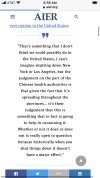It's fascinating to me that y'all have enacted such strict and demanding NPIs at work yet you still had positive cases. Are your colleagues who have tested positive questioned about the sort of precautions they take at home?Weekends. Students being students. I'd drive home on Friday past off-campus houses, and the beer pong in the driveway would be going. I'd have probably done the same back in the day.
Where I work a significant portion have to come in, due to sensitive or classified work. We've had a mask mandate and social distancing requirements from mid-March, and required randomized testing through the Fall, along with mandatory testing for people who had to travel for work. We lock out anyone who needs to quarantine. We've adjusted the HVAC in the buildings to increase turnover and have policies on windows to increase outflow. We've had a lot of people come up positive this Fall. Contact tracing shows we've not had a single case of at-work transmission. What we do works. Beats me about California.
All students were requested to take a test prior to departing (free) and were offered free dorm space for quarantining if they came up positive (quite a few did). This included students that lived in town, not just on campus proper.
You're right, it was/is a hot topic of discussion in town.
Of course, a college student has a greater risk of dying driving to get tested than he does of dying from covid. So does that mean that the University's campaign to stop them from gathering and hanging out hasn't worked? Can the University police not drive by and stop them from playing beer pong? I'd figure college students would be so much more with it during the midst of a deadly pandemic.
Since you seemed to agree with @Flash 's comment about mask wearing -
perhaps you'd like to take a stab at an explanation of why medical professionals have seen patients without wearing surgical masks for years, even in the middle of respiratory virus season, and yet only now do we seem to acknowledge them as such a critical piece of PPE?It boggles the mind



